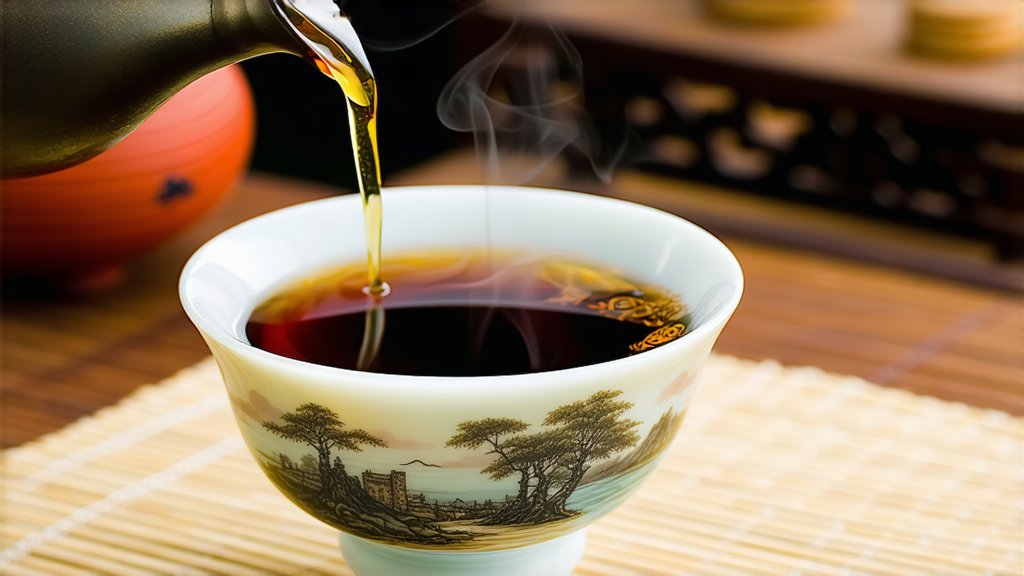
In the vast and diverse landscape of Chinese tea culture, few varieties stand out as vividly as Keemun Black Tea (祁门红茶). Originating from Qimen County in Anhui Province, this exquisite tea has carved a niche for itself on the world stage, captivating tea enthusiasts with its unique flavor profile and rich historical significance. In this exploration, we delve into the history, varieties, production process, and appreciation methods of Keemun Black Tea, offering an insightful journey through one of China's most revered tea legacies.
Historical Background
Keemun Black Tea traces its roots back to the late 19th century, a period marked by the flourishing of international trade and cultural exchange between China and Western countries. It was during this era that the demand for Chinese teas skyrocketed, prompting local farmers in Qimen County to innovate and produce a tea variety that could meet the sophisticated tastes of European consumers. Thus, Keemun Black Tea was born, quickly gaining popularity for its distinct sweetness and aromatic qualities.
Varieties of Keemun Black Tea
Keemun Black Tea is not a monolithic category but encompasses several sub-varieties, each with its unique characteristics. The most notable among these are:
-
Gong Mei (宫美): Often referred to as "Imperial Beauty," Gong Mei represents the pinnacle of Keemun quality. Its leaves are meticulously plucked and processed to yield a tea that boasts a complex interplay of floral notes and a smooth, lingering finish.
-
Xiang Si Piao (香思漂): Translated as "Fragrant Floating," this variety emphasizes the aromatic aspect of Keemun tea. It is known for its light body and a scent reminiscent of fresh flowers, making it a favorite among those who appreciate subtlety in their brew.
-
Dian Hong (滇红): While not strictly from Qimen, Dian Hong shares similarities with Keemun in terms of processing techniques and flavor profiles. Produced in Yunnan Province, it offers a robust alternative with a fuller body and maltier undertones.
The Art of Production
The craftsmanship behind Keemun Black Tea is a testament to the skill and dedication of Chinese tea artisans. The process begins with the careful selection of tea leaves, typically from the Camellia sinensis var. assamica plant, which is known for its larger leaves and higher theanine content. Here's a step-by-step overview of the production process:
-
Withering: Freshly picked leaves are spread out in thin layers to wilt under controlled conditions, reducing moisture content and softening the leaf structure.
-
Rolling: Wilted leaves are then rolled to break down cell walls, allowing enzymes to interact with the tea's natural compounds, initiating oxidation.
-
Oxidation: The rolled leaves are left to oxidize, a process where polyphenols react with oxygen, transforming into complex flavor compounds that give Keemun its signature taste.
-
Drying: Finally, the oxidized leaves are dried to halt further oxidation and lock in the desired flavors. This step also reduces moisture content, ensuring the tea's longevity.
Appreciation Methods
To truly appreciate Keemun Black Tea, one must engage in the traditional Chinese tea ceremony, which emphasizes mindfulness and respect for the tea's heritage. Here are some guidelines for an authentic experience:
-
Warming the Teapot and Cups: Begin by rinsing your teapot and cups with hot water to warm them up and remove any impurities.
-
Measuring the Leaves: Use approximately 3 grams of Keemun tea per 150ml of water. Adjust according to personal preference for stronger or milder flavors.
-
Water Temperature: Boil water to around 90-95°C (194-203°F). Let it cool slightly before pouring over the leaves to avoid scalding them.
-
Steeping Time: For the first infusion, steep for about 2-3 minutes. Subsequent infusions can be longer, as Keemun tea is known for its ability to endure multiple steepings without losing flavor.
-
Observing the Liquor: As you pour the tea, observe its color—a deep amber hue indicative of its richness. Swirl the cup gently to release the aroma fully.
-
Savoring the Flavor: Take small sips, allowing the tea to coat your palate. Notice the initial sweetness, followed by a hint of fruitiness and a lasting aftertaste that speaks of its high mountain origins.
Conclusion
Keemun Black Tea stands as a shining example of China's tea-making prowess, blending tradition with innovation to create a beverage that transcends borders and cultures. Its sweet honey flavor, coupled with a legacy steeped in history, makes it a must-try for any tea connoisseur exploring the depths of Chinese tea culture. Through understanding its varieties, production nuances, and proper appreciation methods, one can truly grasp the essence of what makes Keemun Black Tea a timeless treasure in the world of tea.